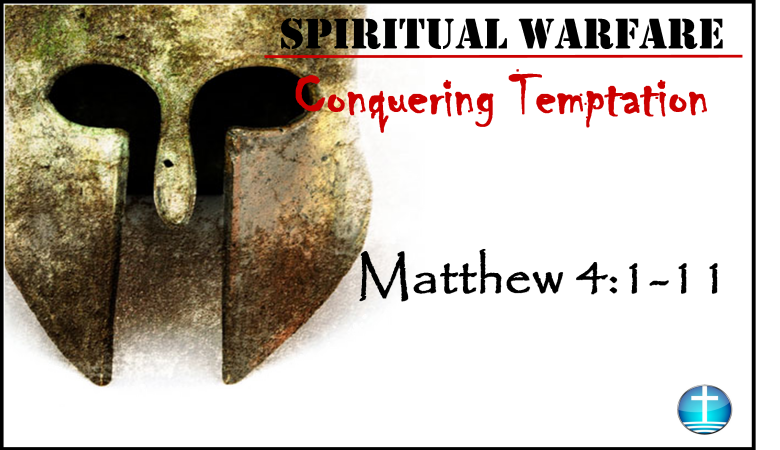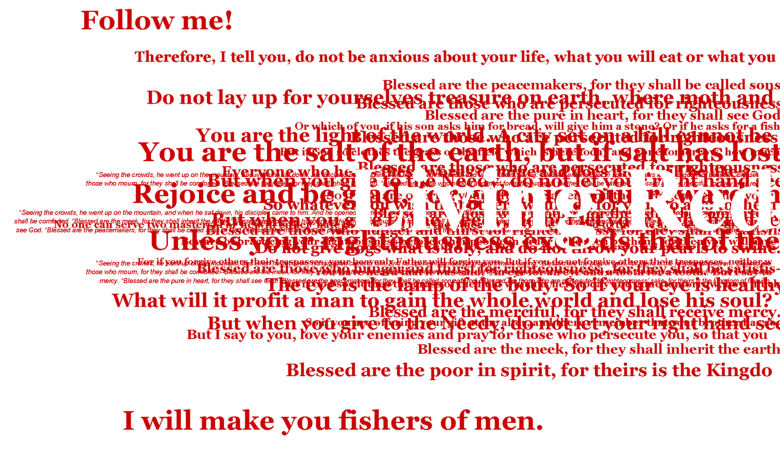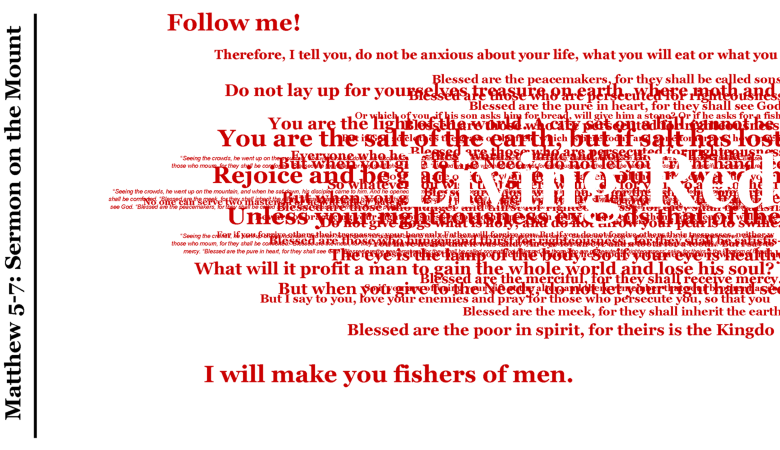Matthew 24:1-51 ~ See to it that you are not deceived PART 1
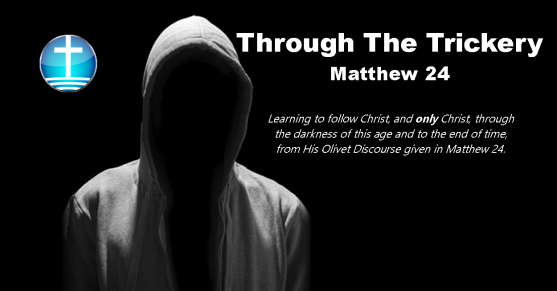
Pray with me. Father, we thank you so much for the promise that you are sending your son to return to this earth. Lord we look forward to that day and we pray as the apostle John. Lord, come quickly. We long to see you, we long to look upon your face, we long for you to take your rightful place as the King over all the earth. We wish to see your dominion exercised without the temptation of sin. We wish to see your blessedness come to your people without any interference from any of the powers of darkness. Your people long to walk perfectly in the righteousness that you purchased for them on the cross. So, with the apostle John we say, come quickly Lord, come we pray. Father, in the meantime, your people continue to live beset by these trials and temptations. We ask that you would walk with us, we know that you will. As we look at your word this morning we pray that your spirit would open our minds to understand what it is that you’re trying to say, to the extent that you allow us to. Father we know there are many difficult things in Matthew 24 that we will never fully be able to grasp. Help us to use those doubts and those uncertainties as an opportunity and an occasion for greater faith and greater confidence in you. Lord, we pray this morning that the word of my mouth as I expose and exegete the Scriptures would be pleasing to you. We also asked Lord that the meditation of our hearts as your spirit breathes understanding and illumination would be acceptable in your eyes. We love you God, in Jesus’ precious name, amen.
Introduction
Turn with me in Matthew chapter 24. We generally take a smaller bite sized chunk of Scripture. We can’t really do that with Matthew chapter 24, at least not today. In order for you to understand and have confidence in the exegesis of any particular verse or any particular paragraph, you really need to be able to see Matthew chapter 24 as a whole. You need to see the whole structure of it to understand the whole thrust and movement before you can have any confidence or any certainty regarding the individual particulars.
When I was about four years old, I recall very clearly being invited by my older brothers, who were about 10 years old at that time, to go down to this pond that was in the back of the pasture where we lived in order to go for a swim. For a little brother to be invited and included by an older brother to do anything was an incredibly wonderful blessing. I thought that was just the greatest thing ever. One small problem for four-year-old Josh, he does not know how to swim. They knew that and I did not. And that’s why they included me. So we make our way down and for fun they took me on the edge of the dock in this cow pond. They said “okay Josh, we are going to throw you in.” To which I kind of scratch my head and thought this isn’t a good idea. I was a little bit reluctant having seen what lay in front of me. They said there is only one way to learn how to swim. My oldest brother thought that as a means of comforting me he would offer me this little tidbit of wisdom. Water is comprised of two molecules of hydrogen and one molecule of oxygen. So really, a third of what you see in front of you, you are capable of breathing. If you panic, breathe deeply. And your suffering will soon be at an end.
Though this was older brothers tormenting and younger brothers, I am here, I survived. I have often allowed my thoughts to go back to that memory because the question that the disciples asked is on par, on track with me thinking that my older brothers were going to teach me to swim by throwing me into a pond. They asked a question and in their own minds they do not fully understand the nature or the full extent of the question they are posing to Christ. I don’t think that they fully grasped the deluge of information that Jesus is about to pour out on them. I’m one hundred percent convinced, as we will see from Acts chapter 1, that they didn’t get what he was saying. If those who were actually there talking face-to-face with Jesus did not get what he was saying, then we as a church removed by two millennia from this event, need to approach this text with humility and with a healthy amount openness to different viewpoints and different ideas. Not all of us in this room are going to look at these passages the same way. Not all of us in this room are going to have the same view of the end times. Not all of us in this room are going to employ the same system of interpretation when it comes to addressing this particular paragraph. And that’s okay. Indeed, I think it’s a good thing. I think that our fellowship and our brotherhood in this room, with those differences of opinion regarding end times are a blessing and not a detriment.
What I want to do for you today is drown you in the many different viewpoints regarding the text of this Scripture. In the weeks ahead we will begin to pick our way through. We will begin to evaluate some of those viewpoints and will begin to try to come to some understanding of what it is that Jesus is saying. For today, I’m going to look just specifically at verse 4 with you towards the end of the message. Before we jump in, I want to share with you some of the viewpoints of the whole structure of Matthew chapter 24 so you can understand that in this room there are individuals who will hold to a different way of looking at this text.
There are three broad systems of interpretation when it comes to the end times. When it comes to prophecy there are three systems of interpretation, three ways of looking at eschatology,from the Greek word eschatos, addressing the eschaton, literally meaning the end things or the things which are at the end. The doctrine of eschatology, the doctrine of last things or end things is what we are looking at.
I want to be very clear, regardless of which of these viewpoints I am about to mention, everybody believes in the inerrancy of Scripture and believe that the Scripture is true and that it is without fault and without error, but come to these different ideas and that’s okay.
There are three broad viewpoints that are utilized by individuals in this room. I can name individuals in this room who are part of our fellowship’s, part of this church, dear brothers and sisters whom I love and who would hold to one particular form and some would vote to another particular form. The first is the one that I suspect most of you are very familiar with and it is commonly known as dispensationalism or pre-millennialism. In dispensationalism or pre-millennialism, there is a distinct difference between what I would call historic pre-millennialism as opposed to dispensationalism. It has to do with the timing of the rapture. Indeed, in your conversations with each other, I would suspect most of you would hold to some form of dispensationalism or some form of pre-millennialism.
Dispensationalism or Premillenialism
Those that hold to that viewpoint would say, from their understanding of Scriptures, that pre-millennialism would suggest that at some point in time there is a great force of evil that is going to come upon this earth, presided over and led by an arch devil or arch sort of character and evil commonly known as the antichrist. At a period of time this individual will rise to power and dominance, he will have great influence over world affairs and he might even preside over a singular world government. Controlling and dictating the events of human history and over us. I mean that in the sense that he is in charge not that he is greater than Jesus. I do not mean that he is sovereign just that he is going to be granted great authority for a period of time. After which, it is commonly said to be about seven years of great tribulation, Jesus Christ will return to this earth. He will destroy the antichrist, he will throw down his one world government and he will establish a kingdom which will exist on this earth for period of time that is referred to as the millennium.
That is referred to in the book of Revelation which is about 1000 years. Now, scholars will disagree whether that is a literal number or symbolic number or a figurative number. It is a really long time! We can agree on that much.
Jesus Christ will come at the end of a seven-year period of intense persecution. He will destroy the antichrist at the end of that seven-year period of time and he will establish a millennial reign. At the end of that millennium, whether it is 1000 years or just a really long time, he will then usher in the eternal state after one final battle. Satan the Dragon will be released from the pit for one grand world conflict known as Armageddon and after that Jesus will be victorious, the Saints will rule with Christ and an eternal state will be ushered in. We will see the beginning of a re-creation where there will be a new heavens and a new earth. That is pre-millennialism. What we mean by that is that Christ will come for his people before, prior to, his millennial reign ~ pre-millennium.
Post-Millenialism
The second viewpoint is known as post millennialism. Post millennialism takes a completely different understanding of many of these texts and many of these passages. The average post-millennial will view all of these references and the Scriptures to be this blessed reign of Christ. They will understand a much closer union between Jesus and his church and they will argue that Jesus is ruling on this earth now, presently through his church. That the church will walk in greater and greater victory and that there will be greater and greater successes that will be had by the church. Ultimately, the church’s efforts proclaiming the gospel on this earth will usher in a period of peace and prosperity and blessedness in which all mankind, through the efforts of the church fulfilling the great commission, will bow to Christ and will worship Jesus at the end of a really long period of time in which the church has exerted this dominion over the earth. Christ will return, for his return is considered to be after the millennial reign which he exercises through the church. Then he will usher in the final state with the new heavens and the new earth, the eternal state.
Amillenialism
And yet a third view is known as amillennialism. Amillennialism doesn’t view references to the millennium to be any sort of millennial reign on this earth. They would view the references to the millennial as a reference to the eternal reign of Christ for all of eternity. The average amillennial will view the Christian as doing his job proclaiming the gospel, encountering persecution, and enduring suffering for ultimately this world is going to come to an end. Christ will return and there will be no millennial reign, per se, of Christ over unbelievers in this present age. That’s why it’s referred to as amillennial. Their understanding of the millennial is not that there is a literal millennial reign, but that in the book of Revelation is symbolic and that at an appropriate time and in His own way He will bring this age to an end. He will judge unbelievers and righteousness believers will be granted a resurrected body and the eternal state will begin.
Those are the three broad systems of interpretation. Coming back to pre-millennialism, you will have many different flavors and many different stripes of pre-millennialist. You will have some that will suggest that there is a secret rapture that takes place at the beginning of this seven-year reign in which believers will be whisked off of this earth, and only unbelievers will be left to suffer the persecution of antichrist and the powers of darkness.
You will have some pre-millennialists who will suggest that the rapture actually occurs in the middle of the seven-year reign of antichrist. Then you will have other pre-millennialists who say that there is a rapture that happens at the end of that seven-year period of tribulation. Then, you’ll have different combinations of this group as well. You will have some that will say there is a rapture at the beginning and there’s a rapture at the end or they may say there is a rapture at the beginning and another one in the middle or there is one in the middle and then another one at the end. Different people have different arguments for different viewpoints. Now, are you all drowning at this point? I take from your laughter that you are, and that’s okay.
We are going to be looking at Matthew chapter 24 for many weeks. As we work our way through, we will constantly refer back to these broad systems of interpretation and you will become very familiar with them. I want you to understand that we are all brothers and sisters in Christ and that we all view these passages differently. There are many good reasons for dividing from one another, doctrinally speaking; this is not one of them. Amen?! The reason I need your enthusiasm is because as I work my way through this text I am going to offend all of you, okay? (Laughter from congregation). I want you to still love me at the end of today. I want you to still think of me as your Pastor. I am going to work my way through this text and were going to sketch the three broad outlines for all of those different systems of interpretation. I will emphasize to you their great strengths, where they are really good and solid in their interpretation of the passage and then I’ll also bring out for you their great weaknesses. This is the other point I want to make. When I criticize your particular form of eschatology I will make reference to a scholar who happens to hold to that particular form of eschatology and I will allow him to do the bulk of the criticizing so that you do not have to be as angry with me. Fair enough? Okay?
A Critique of Premillenialism
Okay let’s get started. The first one I want to look at is classic dispensationalism that holds to a pre-tribulation rapture as well as a post-tribulation rapture followed by a literal millennial reign. This particular theory takes various forms as it approaches Matthew chapter 24. You’ll notice that it is Passion Week. Jesus leaves the temple and he’s on his way out of town. The disciples are commenting, looking at the temple. It is beautiful, it has got all these wonderful features, and it is this great thing. Jesus says that it is going to be all destroyed. Then he’s on his way. And that kind of sinks into their hearts and their like – He’s talking about the end of the world. They make a confusing assumption which will colour their question. They will conflate the destruction of the temple in Jerusalem and the destruction of Jerusalem with the second coming of the Lord. That will influence the question that they posed to Jesus in verse 3.
I will pause here to tell you that I will refer to this routinely as the Olivet discourse. That label, that title for this whole discussion that comes in Matthew 24, comes from this first verse, verse 3.
He is sitting on the Mount of Olives outside of Jerusalem. They sit and have a little pause as it had been about a 45 minute walk at this point coming from the temple compound. We theorize, we don’t know exactly where on the Mount of Olives they have decided to stop and have a break, but about a 30 to 45 minute walk. They’ve had 30 to 45 minutes to chew over the statement that Jesus has just made that it’s all going to be destroyed. Now they ask him this question in verse 3, tell us when will these things be and what will be the sign of your coming, end of the close of the age?
Note carefully the question. Tell us when will these things be? What has Jesus said is that the Temple in Jerusalem is about to be destroyed. So the first question is when? When will the Temple and Jerusalem get wiped out? But, in their minds, they think that is simultaneous with the return of the Lord which leads to their second question. Tell us when these things will be and what will be the sign of your coming and of the close of the age. They put it all together in one giant question. Here’s how classic dispensationalists argue this is the theory. Verse 4, where Jesus begins his reply, all the way down to verse 28 is a description of the seven year great tribulation for which Jesus comes in a secret rapture and after which Jesus comes again in his second Advent to set up his millennial reign. So in verse four where is says “For many will come in my name, saying, I am the Christ, and they will lead many astray.” He begins this discussion at verse 4 all the way to verse 28 “For as the lightning comes from the east and shines as far as the west, so will be the coming of the Son of Man. Where ever the corps is, there the vultures will gather.” Classic pre-millennials will argue that Jesus’ interpretation of this passage, from verse 4 all the way down to verse 28, is talking about the seven year tribulation in which the antichrist is going to come and begin a worldwide campaign of persecution.
Now it goes a little bit further, verse 36 all the way to verse 40 (I will come back to verse 29) is going to then describe a pre-tribulation. These are events that happened just before the seven-year period of tribulation which antichrist comes. Then in verses 29 and 35, jumping back down the passage to middle of the passage. Verses 29 through 35 deals with events that happened after the tribulation when Jesus comes in his millennial reign. Some of you are no beginning to slip below the water aren’t you? That’s okay. I want you to know that that’s okay.
What I’ve just given you the classic outline in which the disciples asked the question, when will this happen and when will you come again. They think, when will the destruction of Jerusalem happen and when will you come again. They kind of blend those two together in one question. The classic pre-millennial answer will be to say that while he talks about this he jumps a little bit further and talks about that and that’s when he talks about the second rein. The question is confused and if we accept the classic pre-millennial interpretation of this passage we would have to suggest that Jesus’ response is equally confusing. They would go so far as to say that Jesus is confused and we would have to say that he provides a very confusing answer to a confused question. There are several refinements to this theory proposed by John Walvoored who is one of the preeminent dispensationalists of the past 100 years and former president of Dallas Theological Seminary. The chapter’s sole allusion to the fall of the Temple in A.D. 70 in verse 2, in an attempt to refine the pre-millennial dispensationalism form of interpretation for this passage, John Walvoored’s understands that Jesus never actually comes to answer the question. This is an interesting sort of non-answer for Jesus. It’s kind of a stretch of the imagination and again, if you are pre-millennial dispensationalist and you are looking at me like “oh I don’t know about this,” I’m giving you John Walvoored okay. So if you can still love me after this all right.
John Walvoored says that there are really three distinct questions that are being answered here by the disciples. John Walvoored’s theory is that the disciples are not confused at all and that they know that there are three distinct questions that need to be asked and they ask all three of them. Question number one, what will be the sign of your coming? Question number two, what will be the sign of the end of the age? In this verse John Walvoored confirmed the question that is of least significance for them; although, it is the question asked first, when will the destruction of the Temple be?
Weaknesses of Premillenialism Interpretation of Matthew 24
Now this is John Walvooreds argument. His statement is that Jesus doesn’t really bother too much with the question of the Temple. He just jumps straight to discussing when it is that he will return. Everything that follows is in answer to the question. Now our brothers and sisters from the Amillennial and Post-millennial schools of thought will say that this is a stretch. Let’s be honest, it is. But, there are other things about that particular interpretation which are little bit confusing. Most notably, I want you to jump down to verse 34. According to pre-millennialists, Jesus is talking about all of these things happening during the seven-year tribulation except Jesus makes a statement which doesn’t quite fit. In verse 34 he says “Truly, I say to you, this generation will not pass away until all these things take place.” Now the disciples are the ones that asked him the question, when’s this going to happen? If we assume for a moment that we agree with Dr. Walvoored that they don’t really care about when the destruction of the Temple is going to happen, even though that’s the first question asked, they are really just concerned with when Jesus is going to return and what the sign of his return will be. And Jesus, in responding to them, understands that they don’t really care about the destruction of the Temple. That they are really just curious to know about when his return will be.
Therefore, his statement here in verse 34 “this generation will not pass away,” the disciples know Jesus is not talking about them or their generation. They know and they understand implicitly that Jesus is talking about some future generation, some distant generation that it’s going to behold and understand all of the signs and that generation, once they see all these things starting to unfold, that group of people will not die until Jesus returns. Now, brothers and sisters let’s be honest with ourselves, I don’t think that’s exactly how the disciples understood it. This means we have to assume that on some level Jesus is being coy or trying to misdirect, and that doesn’t seem to really fit with his character with his disciples.
Strengths of the Premillenial Interpretation of Matthew 24
Let me give you the positives now that I’ve upset many of you. The great strengths of this system of interpretation are that it deals seriously the time markers. You’ll notice a couple of them go back to the verse 15 when you see the abomination of desolation. There is a literal time, there is some sort of a time marker there that you can look at and you see something, this abomination of desolation. When you see it, when you observe when in history, when in time that event is, then you know to do XYZ. We see further down in the text of verse 29; he makes a statement immediately after the tribulation of those days. So throughout these passages, there are clear references to historical events and there are time markers which seemed to order those references and one of the great strengths of pre-millennialism and dispensationalism is that it does a good job with those time markers. It lays out a pattern of history that deals seriously with Jesus’ references to these different time markers.
The one problem is that even if we embrace those time markers, we will still struggle with certain elements of the passage. I have already mentioned one of them to you, “this generation will not pass away.” We can’t really think the disciples didn’t assume that was a reference to them. Here’s another one. If you go back to the passage on the destruction of the temple, Jesus makes the statement in verse 15 “So when you see the abomination of desolation spoken of by prophet Daniel, standing in the holy place, the Holy of Holies, then let those who are in Judea flee the mountains. Let the one who is on the housetop not go down to take what is in his house, and let the one who is in the field not turn back to take his cloak. And alas for women who are pregnant and for those who are nursing infants in those days! Pray that your flight may not be in winter or on a Sabbath.” If we’re going to take this passage to the extent which pre-millennialists suggest that we ought to do, Jesus has not yet come and here’s the problem: there is no Temple in Jerusalem right now for an antichrist figure or an abomination of desolation, referred to in the prophet Daniel and mentioned here in Matthew 24, for an antichrist to go and stand in the Holy of Holies.
This means that in order for this passage to be fulfilled there would have to be a reconstruction of the Temple. There would just have to be. There would have to be a Jewish population engaging in traditional historical Sabbath observance. That’s just the only way you could take that passage. And of course, this isn’t a problem to your average pre-millennialist. The average pre-millennialist would say that is correct and there has to be a reconstruction of the temple.
Conclusion
The strength of this interpretation of the text, the strength of this interpretation is that it takes the time markers seriously. The weakness is that it struggles on two points. The first point being the reconstruction of the temple in Jerusalem and the second point being that it doesn’t offer a really a sound understanding of verse 34 “this generation will not pass away.” At least as far as it is concerned with the original audience of the 12 disciples that pose the question. If we accept that the disciples knew they were asking a confusing question and they fully embrace that Jesus wasn’t talking to them, but some future generation then it’s not a problem. But, that’s not good exegesis. Any other Bible scholar will tell you that the first rule of interpretation is - whatever this text means for us today we have to first know exactly what it meant for those who first heard it -namely the disciples. Okay, what other choices do I have? Maybe I’m ready to jump ship from my pre-millennialism. Where else do I have to go?
We will look at the post-millennial interpretation next week.
Series Information
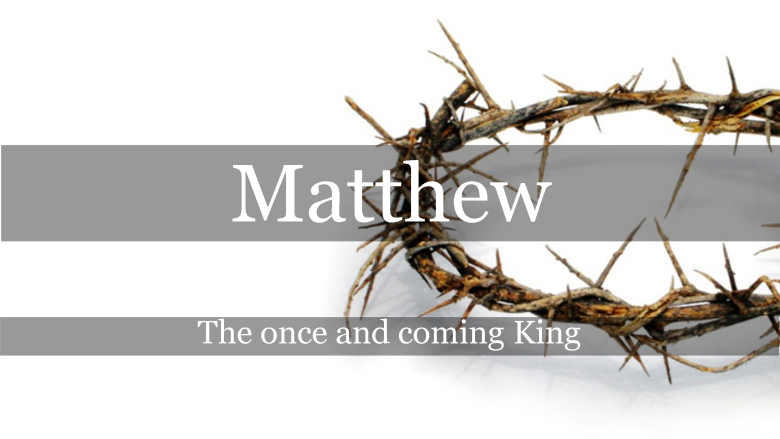
The Gospel of Matthew is a story about a once and coming King. Jesus of Nazareth is the Son of David, the long awaited for Messiah. He has come once, and Matthew tells the story of His arrival, ministry, sacrificial atoning work on the cross, and His promise to return soon.


